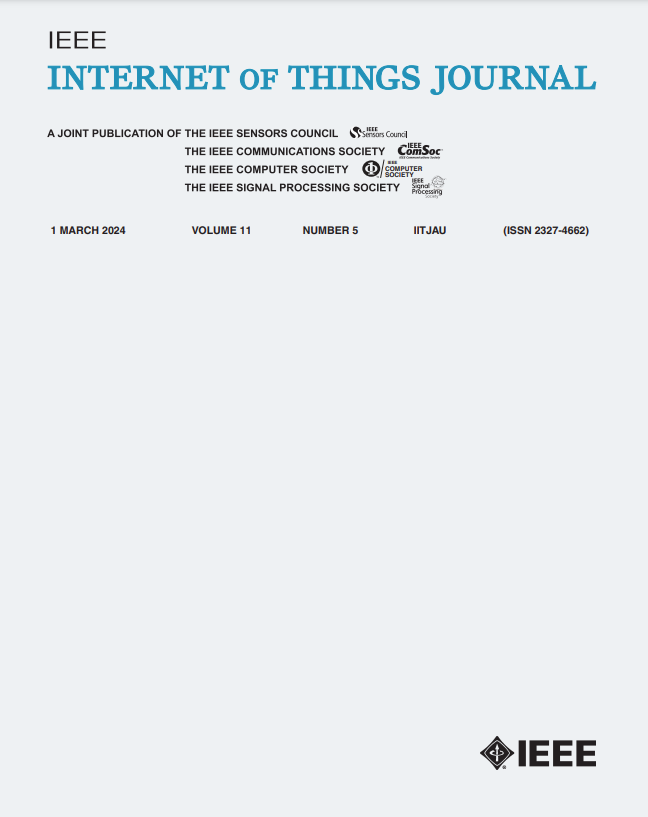基于摄像头的双模态 PPG-SCG:睡眠隐私保护非接触式生命体征监测
IF 8.9
1区 计算机科学
Q1 COMPUTER SCIENCE, INFORMATION SYSTEMS
引用次数: 0
摘要
通过监测睡眠期间的呼吸频率(RR)、心率(HR)、心率变异性(HRV)和血压(BP),可以对睡眠质量进行全面评估,有助于了解和改善一个人的睡眠健康状况。使用摄像机的非接触式生理监测由于其方便、无感染、连续和多用途的特性,近年来越来越受到欢迎。然而,隐私问题限制了基于摄像头的解决方案在睡眠监测装置中的应用。本研究提出了一种新的混合装置,该装置集成了基于相机的地震心动图(CamSCG)和光电容积脉搏图(CamPPG),用于在睡眠期间非接触式测量RR、HR和HRV,同时估计血压。对于近端SCG,我们采用基于相机的激光散斑振动仪来测量胸部的心脏运动,并使用毫米波雷达(RFSCG)对其进行基准测试。对于远端光体积脉搏波(PPG),在保护隐私的情况下,使用离焦相机测量面部皮肤的脉冲信号。在此设置中,我们分析了测量RR、HR和HRV的单一模式,并建立了两种双模式(CamSCG-CamPPG和RFSCG-CamPPG)来测量BP校准的脉冲传递时间(PTT)特征。这项涉及19名受试者的基准测试强调了基于摄像头的双模式SCG-PPG在睡眠期间监测隐私保护生命体征方面的潜力。本文章由计算机程序翻译,如有差异,请以英文原文为准。
Camera-Based Bi-Modal PPG-SCG: Sleep Privacy-Protected Contactless Vital Signs Monitoring
The monitoring of respiratory rate (RR), heart rate (HR), HR variability (HRV), and blood pressure (BP) during sleep allows for a comprehensive evaluation of sleep quality, facilitating the understanding and improvement of a person’s sleep health. Contactless physiological monitoring using cameras has gained popularity recently due to its convenient, infection-free, continuous, and versatile nature. However, the privacy concerns limit the application of camera-based solutions in sleep monitoring setups. This study proposes a novel hybrid setup that integrates camera-based seismocardiography (CamSCG) and photoplethysmography (CamPPG) for contactless measurement of RR, HR, and HRV during sleep while simultaneously estimating BP. For the proximal SCG, we employed camera-based laser speckle vibrometry to measure cardiac motions from the chest, and benchmarked it with a millimeter-wave radar (RFSCG). For the distal photoplethysmographic (PPG), a defocused camera was utilized to measure pulse signals from the facial skin while protecting privacy. In this setup, we analyzed the single-modality in measuring RR, HR, and HRV, and established two bi-modalities (CamSCG-CamPPG and RFSCG-CamPPG) to measure pulse transit time (PTT) features for BP calibration. The benchmark involving 19 subjects highlights the potential of camera-based bi-modal SCG-PPG for privacy-protected vital signs monitoring during sleep.
求助全文
通过发布文献求助,成功后即可免费获取论文全文。
去求助
来源期刊

IEEE Internet of Things Journal
Computer Science-Information Systems
CiteScore
17.60
自引率
13.20%
发文量
1982
期刊介绍:
The EEE Internet of Things (IoT) Journal publishes articles and review articles covering various aspects of IoT, including IoT system architecture, IoT enabling technologies, IoT communication and networking protocols such as network coding, and IoT services and applications. Topics encompass IoT's impacts on sensor technologies, big data management, and future internet design for applications like smart cities and smart homes. Fields of interest include IoT architecture such as things-centric, data-centric, service-oriented IoT architecture; IoT enabling technologies and systematic integration such as sensor technologies, big sensor data management, and future Internet design for IoT; IoT services, applications, and test-beds such as IoT service middleware, IoT application programming interface (API), IoT application design, and IoT trials/experiments; IoT standardization activities and technology development in different standard development organizations (SDO) such as IEEE, IETF, ITU, 3GPP, ETSI, etc.
 求助内容:
求助内容: 应助结果提醒方式:
应助结果提醒方式:


